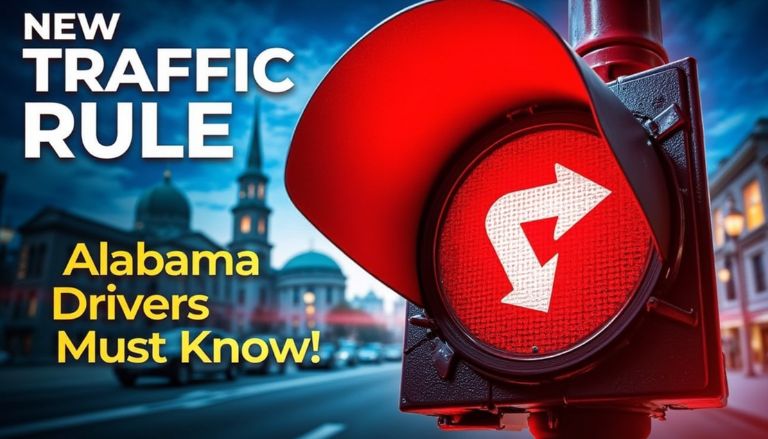Understanding right-of-way laws is crucial for safe and lawful driving. In Alabama, these laws dictate how drivers, pedestrians, and cyclists interact on the roads, ensuring smooth traffic flow and reducing accidents. This article provides a comprehensive overview of Alabama’s right-of-way rules, covering various scenarios drivers may encounter.
Intersections
Intersections are common points of conflict, making it essential to know who has the right-of-way.
Controlled Intersections
At intersections regulated by traffic signals:
- Green Light: Vehicles may proceed straight or turn unless prohibited. However, drivers must yield to pedestrians lawfully within the intersection or an adjacent crosswalk. (Alabama Code § 32-5A-32)
- Red Light: Vehicles must come to a complete stop. After stopping, unless a sign prohibits it, drivers may turn right, yielding to pedestrians and other traffic. (Alabama Code § 32-5A-32)
Uncontrolled Intersections
For intersections without signals or signs:
- Simultaneous Arrival: When two vehicles approach or enter an intersection from different highways at approximately the same time, the driver on the left shall yield the right-of-way to the vehicle on the right. (Alabama Code § 32-5A-110)
Pedestrians and Crosswalks
Pedestrian safety is a priority in Alabama.
- Marked and Unmarked Crosswalks: Drivers must yield to pedestrians within any crosswalk at an intersection. (Alabama Code § 32-5A-211)
- Crossing Outside Crosswalks: Pedestrians crossing at points other than crosswalks must yield to all vehicles. (Alabama Code § 32-5A-212)
- Sidewalks: Vehicles emerging from alleys or driveways must yield to pedestrians on sidewalks. (Alabama Code § 32-5A-112)
Turning and U-Turns
Specific rules apply when making turns:
- Left Turns: Drivers intending to turn left must yield to oncoming traffic that is close enough to pose a hazard. (Alabama Code § 32-5A-111)
- U-Turns: Permitted only when they can be made safely and without interfering with other traffic.
Emergency Vehicles
When approaching emergency vehicles with active lights or sirens:
- Immediate Action: Drivers must yield the right-of-way, move over to the right, and come to a complete stop. (Alabama Code § 32-5A-115)
Merging and Lane Changes
Proper merging ensures traffic flows smoothly:
- Highway Entry: Vehicles entering a highway must yield to traffic already on the highway. (Alabama Code § 32-5A-114)
- Lane Changes: Always yield to vehicles in the lane you intend to enter.
School Buses
Protecting children is paramount:
- Stopping: When a school bus has its stop arm extended, all vehicles must stop, regardless of the direction of approach, unless on a divided highway with a barrier.
Move Over Law
Alabama’s Move Over Law enhances safety for stationary vehicles:
- Stationary Vehicles: Drivers must change lanes away from authorized parked vehicles with flashing lights. If unable to change lanes safely, reduce speed and proceed with caution.
Conclusion
Adhering to right-of-way laws is essential for the safety of all road users. By understanding and respecting these rules, drivers contribute to a safer and more efficient transportation environment in Alabama. For more detailed information, refer to the Alabama Code and the Alabama Department of Transportation.







Leave a Comment